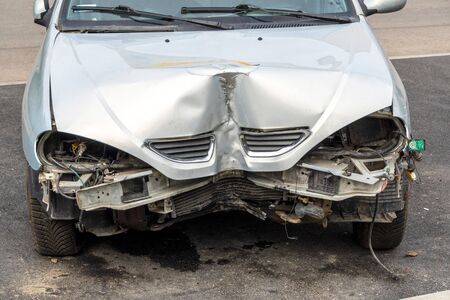What Is a Misfiring Cylinder?
When you hit the open road, there’s an expectation that your engine will hum along in perfect harmony. But if your vehicle starts to stumble or shake, you might be experiencing a misfiring cylinder—a classic troublemaker under the hood. In simple terms, a cylinder misfire happens when one or more cylinders fail to ignite the air-fuel mixture at the right time, robbing your engine of power and smoothness. For most drivers, the signs are hard to miss: rough idling, jerky acceleration, unusual vibrations, or even the dreaded “check engine” light flickering on your dashboard. Sometimes, you’ll catch a sudden drop in fuel efficiency or a distinct popping sound from the exhaust. These symptoms aren’t just annoyances; they’re warnings that something important needs attention. Ignoring a misfire can lead to bigger headaches down the line—think damaged catalytic converters or costly engine repairs. That’s why it’s crucial for car owners across America, whether cruising Route 66 or navigating city streets, to recognize these early signals and address them before they turn into bigger problems.
Common Causes of Cylinder Misfires
When it comes to diagnosing a misfiring cylinder, understanding the root cause is half the battle. Let’s pop the hood and take a closer look at some of the most common culprits behind those pesky engine hiccups that can turn your smooth ride into a sputtering affair.
Spark Plug Issues: The Usual Suspect
Spark plugs are the unsung heroes of your engine, igniting the air-fuel mixture with precision timing. Worn or fouled spark plugs can easily lead to misfires, causing rough idling, hesitation, and even reduced fuel efficiency. If your vehicle’s been clocking up the miles or you notice sluggish performance, checking those spark plugs is a smart first step.
Fuel Delivery Problems: Starving for Power
Your engine relies on a consistent and balanced delivery of fuel to each cylinder. When fuel injectors get clogged or fail, certain cylinders may not receive enough fuel, leading to misfires. Low fuel pressure from a failing pump or dirty filters can also create similar headaches under your hood.
Ignition Coil Failures: Breaking the Chain
The ignition coil transforms battery voltage into the high-voltage jolt needed by spark plugs. A faulty coil disrupts this process, preventing cylinders from firing properly. Modern vehicles often use one coil per cylinder, making it easier to isolate and replace a bad unit—but when one goes out, it’s best to check them all.
Other Noteworthy Causes
| Cause | Description | Typical Symptoms |
|---|---|---|
| Vacuum Leaks | Unmetered air entering the intake system affects combustion balance. | Rough idle, stalling, poor acceleration |
| Compression Loss | Worn piston rings or valves reduce compression in affected cylinders. | Poor performance, backfiring, engine shaking |
| ECU/PCM Issues | Malfunctioning engine computers can send incorrect signals to ignition and fuel systems. | Random misfires, warning lights on dash |
A Classic Combination of Troubles
Many misfire cases result from more than one issue working together—a tired spark plug here, a slightly weak injector there. Diagnosing the exact cause takes patience and careful inspection. But once you know what to look for under the hood, you’re well on your way to restoring that classic smooth-running feel we all love.

3. How Misfires Affect Your Engine and Driving
When a cylinder misfires, it’s not just an under-the-hood issue—it’s something you’ll feel every time you hit the road. For generations, American cars have been celebrated for their buttery-smooth rides and powerful engines, but a misfire can take all that classic charm and toss it out the window. First off, performance takes a noticeable hit. You might experience rough idling, hesitation during acceleration, or that dreaded jerking feeling when cruising down Main Street. It’s like trying to enjoy your favorite oldies tune on a radio with static—something vital is missing.
Your wallet will notice too. Misfiring cylinders force your engine to work harder while delivering less power, resulting in decreased fuel economy. That means more frequent stops at the pump and less money for your next weekend road trip. But that’s not all: misfires also increase harmful emissions, which isn’t just bad for Mother Nature—it can lead to a failed emissions test and potential fines in states with strict smog regulations.
Perhaps most importantly for any fan of classic American motoring, misfires rob you of that legendary smoothness—a trademark of well-crafted Detroit steel from days gone by. Instead of gliding down the highway, you’re left with vibrations and rattles that make every drive feel like a chore rather than a joy. In short, keeping your cylinders firing properly isn’t just about mechanics; it’s about preserving the soul of your ride.
4. Diagnostic Tips: Catching a Misfire Early
When it comes to keeping your ride running smooth, nothing beats the tried-and-true methods found in American garages across the country. Diagnosing a misfiring cylinder early can save you time, money, and a whole lot of headaches down the road. Here are some shop-tested approaches that have stood the test of time—and engines.
Classic Signs You Cant Ignore
First off, trust your senses—especially your ears. A rough idle is often one of the first giveaways that somethings not firing right. If your engine sounds like it’s stumbling or shaking at stoplights, pay attention. Don’t ignore vibrations or loss of power; these are classic warning signals that old-school mechanics have relied on for generations.
The Power of Your Check Engine Light
Modern rides come with a handy tool right on your dashboard—the check engine light. While it might seem like just another blinking nuisance, this little indicator can point you straight to trouble. A code reader (widely available at most auto parts stores) can help you pull diagnostic codes and narrow down the culprit cylinder or component causing the misfire.
Simple Shop-Tested Troubleshooting Methods
| Method | Description | What Youll Notice |
|---|---|---|
| Visual Inspection | Check spark plugs and wires for damage or wear | Cracked plugs, frayed wires |
| Sound Test | Listen for uneven engine rhythm at idle | Chugging, sputtering noises |
| Code Reading | Use an OBD-II scanner to read fault codes | Error codes like P0301 (cylinder 1 misfire) |
| Fuel Smell Test | Sniff around exhaust for unburned fuel odor | Strong gasoline smell means incomplete combustion |
| Spark Test | Use a spark tester tool to check spark plug firing | No spark = ignition issue in that cylinder |
Don’t Forget Routine Maintenance
A big part of catching misfires early is sticking to regular maintenance schedules—changing spark plugs, inspecting ignition coils, and swapping out air filters as needed. Old-school wisdom says: take care of the little things before they become big problems.
The Bottom Line: Stay Attentive, Stay Ahead
Catching a misfire early isn’t rocket science—it’s about staying alert and trusting both modern tech and classic garage know-how. Whether you’re listening for trouble at idle or pulling codes from your dash, these American shop-tested tips will keep your wheels rolling smooth and steady.
5. Solutions and Preventive Maintenance
When it comes to taming a misfiring cylinder, nothing beats the wisdom of classic repairs handed down through generations of gearheads. First and foremost, always start with the basics—swap out those tired spark plugs for fresh ones, double-check the ignition coils for wear, and give your fuel injectors a thorough cleaning or replacement if needed. If you’re dealing with old-school engines, don’t forget to inspect distributor caps and wires for cracks or corrosion—sometimes it’s the simplest fixes that get you back on the road.
For many American drivers, preventive maintenance is more than just routine—it’s a cherished ritual. Make oil changes non-negotiable, keep an eye on your air and fuel filters, and top off all fluids religiously. Take a cue from classic car enthusiasts by listening to your engine: unusual knocks or shudders can be early warnings before misfires escalate into bigger headaches. Don’t ignore that check engine light; modern diagnostics can pinpoint trouble spots before they turn into costly repairs.
Regular tune-ups aren’t just about keeping your ride running—they’re about preserving the spirit of American motoring. By sticking to these tried-and-true habits, you’ll ensure smoother starts, better fuel economy, and that satisfying purr every time you turn the key. Whether you’re cruising down Route 66 or just heading to the grocery store, a well-maintained engine means peace of mind for every mile ahead.
6. When to Call a Professional Mechanic
There’s something uniquely American about tackling car repairs on your own—getting your hands dirty in the driveway, fueled by determination and maybe a little classic rock on the radio. But even the most seasoned weekend warrior knows that some issues go beyond a quick tune-up or parts swap. When it comes to misfiring cylinders, recognizing when to hand the wrench over to a professional can save you time, money, and headaches.
Signs It’s Time to Step Back
If you’ve run through the basics—checked your spark plugs, swapped out ignition coils, inspected vacuum lines—and the engine still sputters or shakes, it might be time to consult an expert. Persistent check engine lights, rough idling that doesn’t improve, or performance drops you can’t pinpoint are all signals that the problem could be deeper than surface-level fixes.
Complex Diagnostics Require Advanced Tools
Modern vehicles blend old-school muscle with high-tech electronics. Diagnosing certain cylinder misfires often requires specialized diagnostic equipment and software that goes beyond what most home garages have. If troubleshooting starts feeling like chasing ghosts—or if your OBD-II scanner spits out codes you can’t interpret—it’s probably best to let a trained mechanic take over.
Don’t Risk Costly Mistakes
Pushing ahead with guesswork can do more harm than good. A misfire caused by internal engine issues—like faulty fuel injectors, worn piston rings, or valve problems—needs expert attention. Attempting repairs without the right know-how could lead to bigger bills down the road or even permanent engine damage.
The Value of Classic Craftsmanship
Trusting a reputable local mechanic is like leaning on a master craftsman. They bring years of experience and an eye for detail honed through countless repairs. Whether you drive a vintage Chevy or a modern Ford F-150, there’s wisdom in knowing when to call for backup and let skilled hands keep your ride running strong.
Remember: tackling projects yourself is part of car culture’s timeless spirit—but so is respecting the limits of your toolbox. When the fix seems out of reach, don’t hesitate to seek professional help and keep your wheels rolling smoothly for miles to come.


